To inaugurate the first of a continuing series of posts on Andhra Personalities, I thought it best to commence with one of the most celebrated and most successful of Andhra Kings, Gautamiputra Satakarni.
The most famous of Andhra’s most glorious line of rulers, the Satavahanas, Gautamiputra was an Emperor, general, and defender of Dharma. This line of kings had many capitals, from Pratishtana and Pataliputra in the North to Amaravati in the South. It is the latter, however, that is most associated with the Empire, and its ruins (especially its famous stupa) can be seen in Guntur today.
Satavahana Dynasty
Referred to as the Andhra dynasty in the Puranas, the Satavahanas gained their patronym from the first of the Satavahanas, who was found riding a lion or “saatha”, and thus had a lion for a mount or “vahana”. As one of our venerable Pandits adduced, “Ever since the time of the Amaraavati Sculptures down to the recent time of ‘Sata silpi’ the lion seems to be emblem and the ideal of the Aandhra race. The god Narasimha, half man half-lion, is the deity of several popular shrines in Aandhra. The privilege of being seated on the lion, the throne or seat of power is the ambition of every Aandhra…Saatavahanas, Aandhra emperors of Magadha had the warrior seated on the lion for their emblem“. [2]
He also asserted that , “The Aandhras as a race show special, regard and love for the lion. A woman riding on the lion, ‘Simhastha’ is a popular deity in their religious literature and in the images of goddesses carved on the walls in their religious institutions.” [2] Most appropriately it was noted that “The Aandhras enjoy even to this day a reputation for impulsiveness, enthusiasm and zest for noble action, like the lion.” [2] I guess some things don’t change!
The Imperial dynasty begins with Simuka/Srimukha, who was an Andhra in the court of the Kanva dynasty of Magadha. With the assistance of the Andhra kingdom’s army he defeated and dethroned the last Kanva and began the glorious reign of the Satavahana kings.
The current Western historical paradigm establishes the Satavahanas’ imperial rule in around 200 BCE and Gautamiputra in 78CE (though our Pauranic history places them much earlier).
There were many Satakarnis in the dynasty. To distinguish between the various Emperors, matronymics were frequently used. Thus, this Satakarni was the son of Gautami, hence Gautamiputra Satakarni.
Background
The son of Gautami Balashri and Emperor Sivasvati Satakarni , Gautami-putra was a royal prince of great qualities. He was the 23rd in this illustrious line of Kings.
Satavahana society is recognised for the high status it accorded women. They were active not only as figures of high society, but even in affairs of state and administration. In short, “Satavahana society was free and open but not permissive“. [1] It was also significant for great artistic achievement. This dynasty is considered the main innovator of rock-cut architecture, as evidenced by a number of Chaitya halls and Viharas that are credited to them, and above all, the famous Amaravati stupa.
At the time of Gautamiputra’s ascension to the throne, India was under great pressure from foreign invaders such as the Sakas, who had broken through the Khyber pass. The Satavahana empire found its champion in this Satakarni.
Achievements
His rule took place at the time when audacious foreigners were breaching the borders of India. He proved himself to be the hero of the age, successfully defeating the Sakas (scythians), Pahlavas (parthians), and Yavanas.
He is most famous for his outstanding victory over and chastising of the Saka ruler Nahapana, who was uprooted from Malwa and Gujarat and consigned to the deserts of Rajasthan. The Sakas made peace through matrimonial alliance, marrying off the first of several princesses to Gautamiputra and/or his descendants. Indeed, what began as a clash of traditional Indian and recent arrival, would in succeeding generations become an inter-family rivalry due to the Indianising of the Sakas. Matrimonial relations were what prevented either dynasty from ending the other.
Satakarni conducted two Ashvamedha yajnas and one Raajasooya yajna to commemorate his sovereignty. His sway most likely extended at least as far as Rajasthan and Gujarat to Kanchipuram and Odisha, though his domain is presently considered to reach from Kutch and Ujjain to the Tamil Nadu border. Gautamiputra is credited to have conquered the lands of Anupa, Aparantha, Saurashtra, Kukura, and Avanti. He is considered the greatest of the Satavahana Kings.
Legacy
His titles were Trisamudra-toyapita-vahana (one whose horses had drunk waters from 3 oceans) and Saka-yavana-pahlava-nisoodana (destroyer of Saka, Yavana and Pahlavas).
He was also a great patron of Sanskrit and Prakrit (which was the administrative language of the empire).
His wife, Queen Vasishti, was known for her charity and patronage of both traditional hindu vedic dharma and buddhism.
He is remembered today by historians as the Greatest of the Andhra Satavahana dynasty, and among the Great Emperors of India, making the Andhras truly “a race of lions”.
References:
- Rao, P.R. History and Culture of Andhra Pradesh. New Delhi. Sterling Publishers. 1994
- Kota, Pandit Venkatachalam. http://trueindianhistory-kvchelam.blogspot.com/2009/09/aandhrasaatavahana-or-saatakarni.html
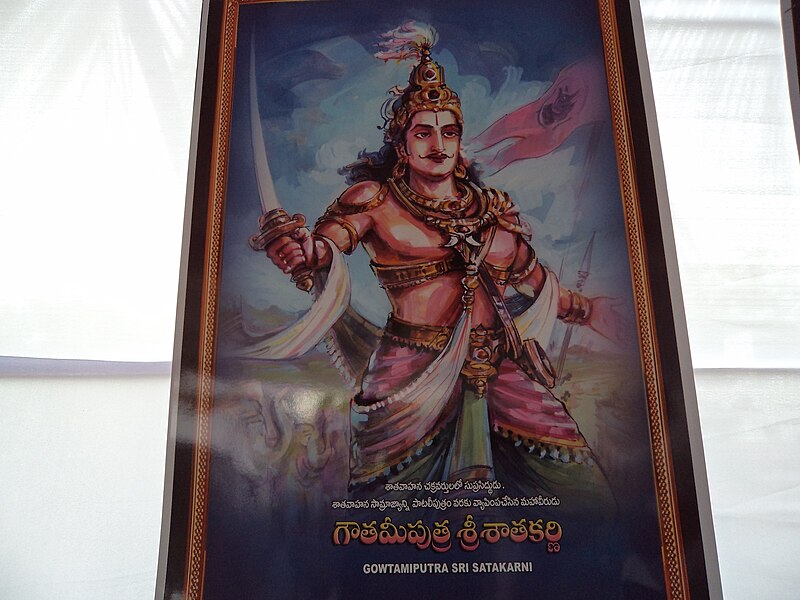

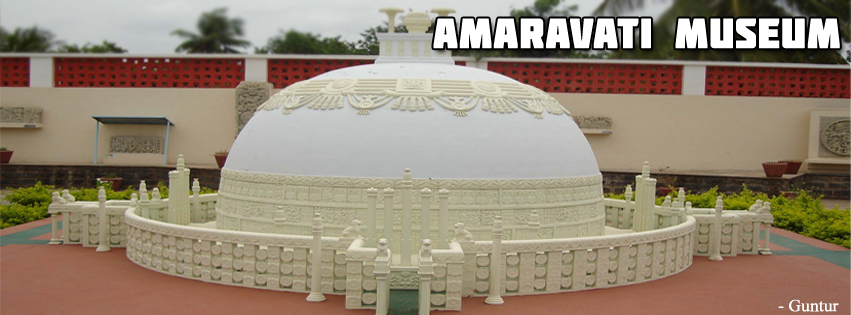

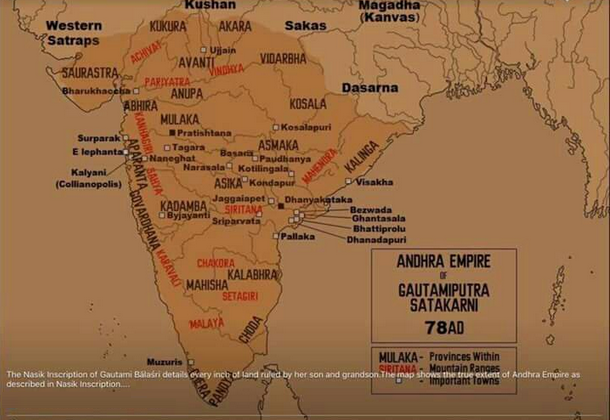
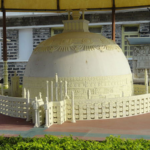

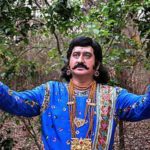



What a figure, and what a fall from such greatness today for the Andhras. Thank you for this post which reminds us of past glory…and how cultured we need to be to regain it.
@ Nyaya, my pleasure. It is the duty of all of us to preserve and prioritize our culture as the inheritance of posterity. Only after this will Gautamiputras again walk our lands and restore our glory. Let’s hope for the best.
proud to be an andhrian
Thank you for your comment Swathi gaaru. Yes, we should all be proud of our Andhra heritage. Knowledge of our culture and history will make us better people and better Indians 😉
Dont invent English word ,”Andhrian” to paint foreign crap . Just say “Andhra” means Andhra people.
I am not an Andhrite / Andhrian but I always feel proud when I hear the name of Gautamiputra Satakarni belonging to the the glorious dynasty of the Satavahanas who defeated the Sakas (Scythians) and established the Hindu kingdom over most of India in a golden age.
Namaste Rajiv ji. Yes, he’s one of my favorite historical figures since he represents a balance between Andhra rashtra and Bharatvarsha, and raised a common dhvaja for all Bharatiyas in a difficult time. Though obviously not from Maharashtra, I too take the same pride in Chhatrapati Shivaji’s heroism and the undefeated record of Baji Rao Peshwa. Hopefully more and more people will have the same Pan-India perspective that we do. So you definitely don’t have to be an Andhraite to be part of our online community 😉 . Thank you for your comment and look forward to future discussions with you.
I was just searching the name in google as talks are going on to show this history on sliver screen of telugu cinema and i’m delighted to found the portal on the same on your page much before. Appreciate your work and keep it up.
Thanks! He’s one of our favourite historical figures, and I’m sure Krish will do an amazing job on the movie. We look forward to promoting it.
Your movie trailer rocks….let it give light to the world the might of Andhra people
Thanks for sharing your knowledge. Eagerly wait to see same to the Telugu screen
Happy to. It’s our shared heritage! Who will share with us if we don’t share with each other 😉
Dear Sir,
Frankly speaking i am very bad in history, but when Krishh announced movie about this great king Gowthamiputhra, then i started getting information about him. I got some basic information from this portal. Do you have any refaral or documents to know more and more about king Gowthamiputhra
Pavan, no need to feel shy about your history knowledge. We are all students of history, only 😉 .
Sure, a good place to start is P.R. Rao gaaru’s excellent book: History and Culture of Andhra Pradesh. This was pre-bifurcation, so of course, includes our Telangana brothers & sisters as well, and our shared history with them. It has an in depth study of the Satavahana dynasty, and Gautamiputra’s place in it.
I also recommend R.C. Majumdar’s Ancient India for a wider lens to understand the Satavahanas in the context of the Sakas and Pahlavas.
These will help you understand, despite the paucity of sources, why Gautamiputra was a great Emperor.
N.R.I.Pathi garu, thanks for keeping this page up with so much of information. I hope, Krish will make fantastic movie and I want to learn about Satakarni before watching the movie.
Happy to, Santosh. Glad you’ve taken an interest.
Don’t just read about Gautamiputra, though. Also read about the Art & Culture he was trying to protect
Whether ancient
http://andhraportal.org/amaravati-the-city-its-art-its-architecture/
Medieval
http://andhraportal.org/personalities-annamacharya/
or Modern
http://andhraportal.org/personalities-nataraja-ramakrishna/
Culture is what unites us, gives us purpose, and what our Great Kings like Satakarni and Queens like Rudhrama Devi were trying to preserve and pass on.
Highly admirable work in educating future Andhra generations about the cultural wealth we inherited and the great people who preserved that bounty for us.
Thank you for your comments, AndhraGuy, and for seeing what we’re trying to do. Yes, we’ll attempt to cover as much ground and as many personalities (including of course KDR!) as time permits. Hopefully more and more readers will contribute so we can make sure we include as much of our heritage as possible, for the benefit of all Andhras.
Appreciate the kind words.
KDR was also a non Telugu. He was a Tuluva but culturally was Teluguized.
In fairness, this matter is still up for debate. Not only Tulus and Telugus, but Kannadigas also claim KDR. Simply because the dynasty was called Tuluva does not make it Tulu. Looking at the other dynasties of the empire, Araveedu was a known Telugu dynasty (related to Araveeti Somadeva who joined with the Musunuri Nayaks to liberate Andhra desa from Turks).
Even the Sangamas are strongly considered to be Telugu Kshatriyas of the Yadava Chandravanshi dynasty and are linked to the court of Warangal. To avoid needless inter-regional, inter-caste fighting we usually don’t dwell on such matters, but just thought it was important to weigh in on this point, which is far from settled. Hopefully the history will be settled by historians and traditional Pandits at some point. Thanks for your comment.
Tuluva means not Tulu Language Bro … Tuluva is one of the dynasty under Vihayanagara Kingdom
1 Sangama
2Saluva
3 Thuluva
4 Aravedu
KDR belongs to Tuluva Dynasty …. All these people are belongs to Yadavas who served under Kakathiya Dynasty Later they came to Vidhranya pura to establish their kingdom near Thungabadra River
Though they were called Andhras and had one of the capitals in the region they were not Telugus. But Prakrit speakers.
The very first dynasty which truly be called Telugu were the Kakatiyas. Even eastern chalukyas who issued the first telugu inscript and patronized Telugu literature were Kannadigas.
Separation of Telugu ethnicity from Andhra identity is incorrect and of recent origin. Andhra is the traditional Sanskrit name for modern Telugu speaking lands. Even Telugu was called Andhra bhasa. Antiquity of Telugu is still being determined.
Satavahanas were ethnic Andhras. The court and official language of their empire was Prakrit–which was the case with most empires of antiquity. That Kakatiyas were likely the first to use Telugu for official purposes does not make them the first Telugu/Andhra dynasty. Many other ethnic Andhra dynasties, such as the Vishnukundins, and even the Pallavas are considered ethnic Andhras (related to the Satavahanas). Eastern Chalukyas were originally Kannadigas, true. They deserve due credit for giving patronage to Telugu as a literary language.
There was much back and forth between regions in earlier eras, and linguistic borders were not so hard and fast. Haihayas of M.P. ended up in Andhra. Andhra Satavahanas ended up in Magadha. All very interesting, but all still being investigated.
Thought provoking by the legacy of “Gautamiputra Satakarni”. Proud to be an Indo-Andhra decent. Thank you for posting.